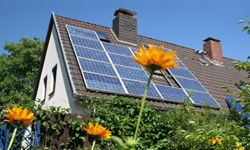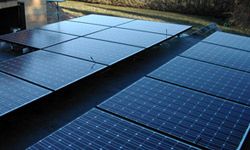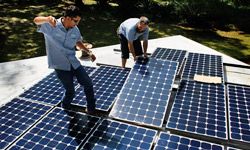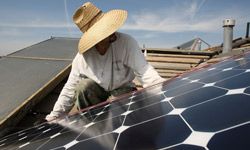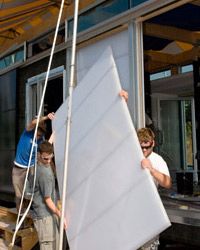Key Takeaways
- Five innovative features of a solar-powered home include solar panels, energy-efficient appliances, smart home technology, green roofs and rainwater harvesting systems.
- Solar homes can reduce environmental impact, lower energy bills and promote sustainable living practices.
In the last 10 years, homes with rooftop solar arrays have gone from curiosity to commonplace. It's a trend perhaps best exemplified by Home Depot's decision to start stocking solar panels in 2001 [source: DOE].
The technology has been available for decades -- NASA has been using solar-powered satellites since the 1960s, and as far back as World War II, passive solar heating systems (which turn solar energy into heat instead of electricity) have been used in U.S. homes [sources: Southface, DOE].
Advertisement
Getting active solar systems in the mainstream residential market has proved a challenge, though. Active solar power uses arrays of photovoltaic cells to convert sunlight directly into electricity, and it has traditionally been a prohibitively expensive technology.
The benefits of residential solar power are obvious: Energy from the sun is endless (at least for the next 5 billion years, give or take); it provides clean energy with no greenhouse-gas emissions; and it can save people money on their electric bills [source: APS]. But there are factors to consider when deciding whether solar power would be a good choice for you -- and cost is only one of them.
In this article, we'll look at five of the most important issues to address when you're thinking about investing in a residential solar-power setup. Using photovoltaic energy is a very green and potentially rewarding move, but it's not quite as straightforward as getting your power from the established electrical grid.
The first consideration is one you may not have thought of: Do you have to do anything to the solar panels once they're up there on your roof?
